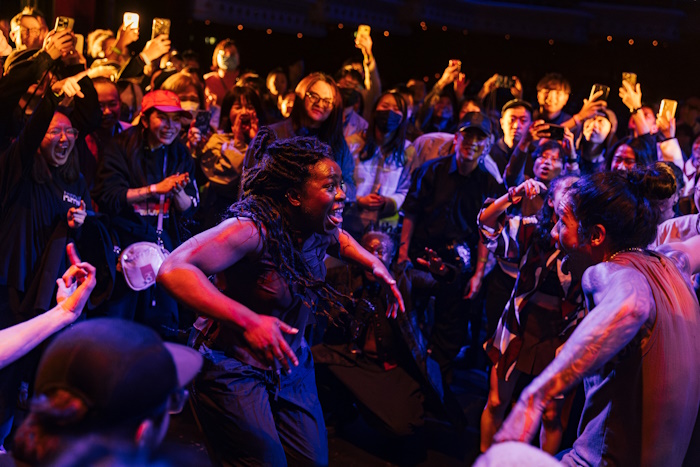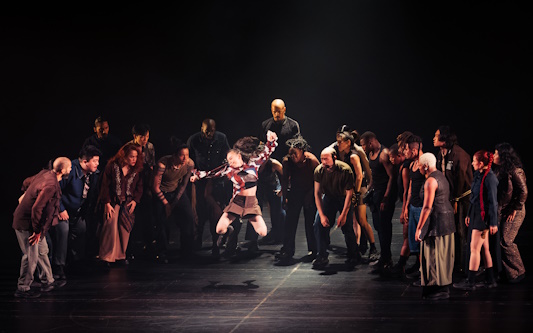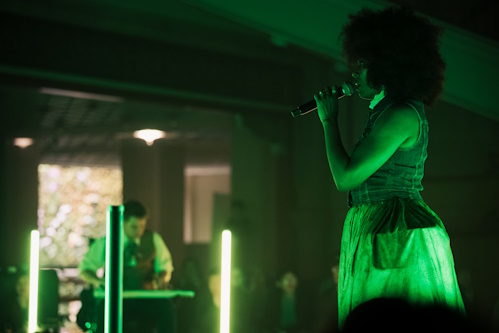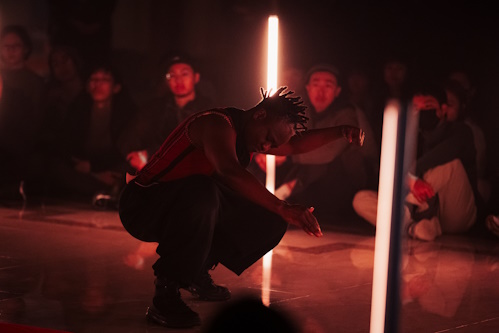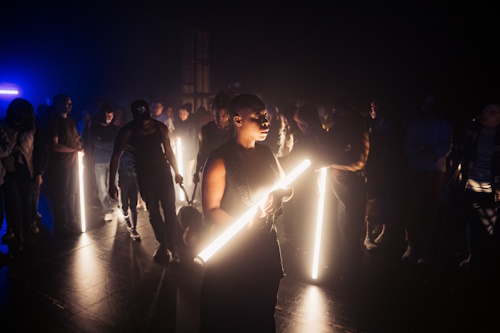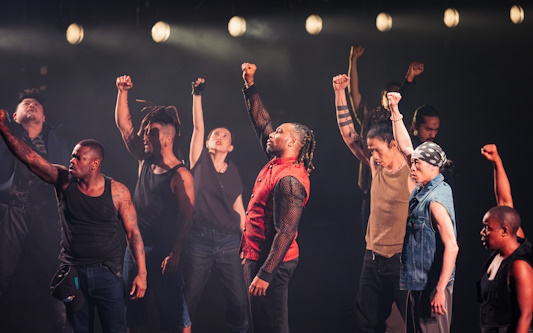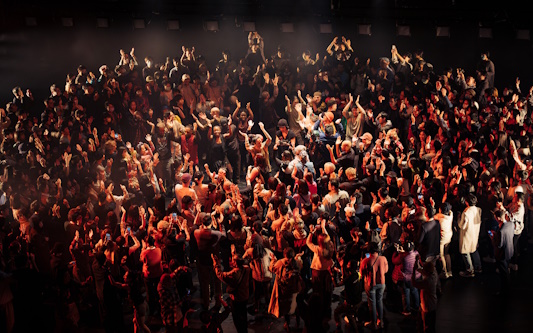National Theater, Taipei
February 20, 2025
Three spaces. Three hours. Twenty-four French and Taiwanese performers. Bintou Dembélé’s Rualité and local company Les Petites Choses Productions (小事製作). At times deeply moving, at times incredibly celebratory. Informative too. A meeting of baroque and the street that works remarkably well, the 2025 edition of the Taiwan International Festival of Arts (台灣國際藝術節) got underway with something rather different in the shape of Dembélé’s G.R.O.O.V.E.
A major figure in French hip-hop, Dembélé is best known for her 2019 choreography of Jean-Philippe Rameau’s opera-ballet Les Indes galantes for the Paris Opera Ballet. Choreographic excerpts from that pop up in G.R.O.O.V.E., along with short films about protest cultures, live music and singing, and regular concert-style dance, before rounding off with a marvellously celebratory few minutes when the audience are invited to join the performers on stage.
Although created for the Opéra de Lille, G.R.O.O.V.E. is structed in such a way that it can be adapted to most large venues. In Taipei, the audience were divided into three groups, each starting their journey from a different place, each watching the first three sections separately, before coming together post-interval. There is a lot to take in.
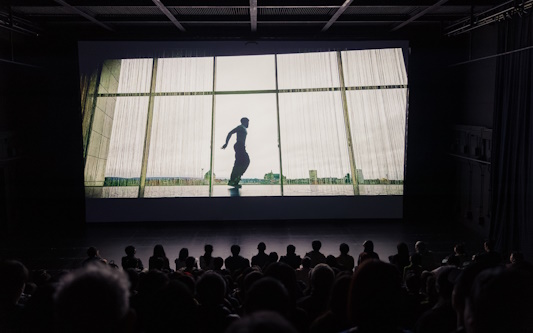
showing dancers in various locations around Metz
Photo National Theater & Concert Hall / Lee Chia-yeh
In the Experimental Theater, three films lead the audience into the dance culture of southern India and Dembélé’s own journey. This Is Not a Performance by Ana Pi reveals how street dance was born in violence and resistance, while the choreographer’s own S/T/R/A/T/E/S Quartet dancers in Metz, one excerpt in Metz Cathedral being especially striking.
But most interesting is The Road to Percussion by Féroz Sahoulamide, which draws back the curtain on the form, heritage and perceptions of daapan kuthu, a very informal form of dance from Tamil Nadu with none of the strict rules of classical South Asian styles. Danced in any attire, and always accompanied by racy and fast paced percussion, it’s certainly exciting. So, why do we never see it. With it’s feel of the street, is it simply seen as ‘low art’. Or is it, as he suggests, more to do with caste.
Back downstairs, the area framed by the grand staircase becomes a ceremonial space. Charles Amblard almost caresses his lap steel guitar, conjuring sounds that are modern but writ through with history and North African influence. When joined by singer Sandra Nkaké and her fabulous voice that comes with all the best echoes of Nina Simone, the combination is terrific. But this is no ordinary concert, Nkaké being joined by Dembélé herself, who seems called by her voice, which slowly awakens something deep inside.
To the stage, with its fire curtain down, the huge black space pierced by light beaming up through grills, and a few tubes around the walls. As dancers of Dembélé’s own Rualité mingled with the audience there was no sense on just how moving things were going to get.
And then, in one corner, motionless, face down, one discovers a body in a hoodie. A victim. Who? Why? There are no answers. We look. No-one intervenes. Until, that is, a member of audience pulls back the hood. Unscripted or prompted, it was unclear but the moment was intensely powerful, the figure turning from anonymous object to real human in seconds.
As if that not wanting to get involved was not reflective enough of modern society, even more powerful was the dragging of the body away and then being hoisted aloft to the repeated sound of camera shutters. Why help when you can take a photo and put it on social media? And if it’s a selfie, even better.
The three audience groups finally came together in the auditorium to witness some fabulous and very powerful dance as baroque met krump, voguing and hip hop in a rush of adapted excerpts from Les Indes galantes. The rhythms seize you. Both visiting and local dancers were extraordinary as their movement shifted between rage and affirmation. Alongside that was more from Nkaké, and a classic heavy rock guitar solo from Amblard.
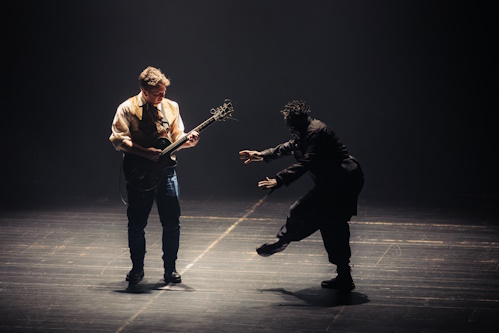
Photo National Theater & Concert Hall / Lee Chia-yeh
And when the cast invite the audience to join them, many don’t need asking twice, rushing to the stage to share, to participate, to celebrate. To be as one. Together. It was quite something.
A lot to see. For sure. But, as it seems in other venues, a fair chunk of the show’s just over three hours was spent waiting around, usually standing. This was a preview performance, however. But, while I suspect things will get a little slicker, I struggle to see it being eliminated significantly. The interval doesn’t help either. G.R.O.O.V.E. is episodic anyway but it conspired to make it feel not so much four chapters from a book, as four different books.
Promenade performances are difficult, though. Audiences do have a habit of doing the unexpected. Perhaps the clear separation of sections in this way was intentional, and you can only work with the building as it is, but I cannot help but feel the evening would have benefitted from transitions being more organic, the audience encouraged in some way rather than directed.
Still, G.R.O.O.V.E. is quite an evening. In Europe, popular culture and dance forms have long had a place in palaces of art, but not in Taipei. It was an evening of visual and emotional power, and of fireworks, that I have not seen the like of previously at the National Theater; an evening that broke conventions. Now keep on breaking them.
This post was originally published on this site be sure to check out more of their content.


